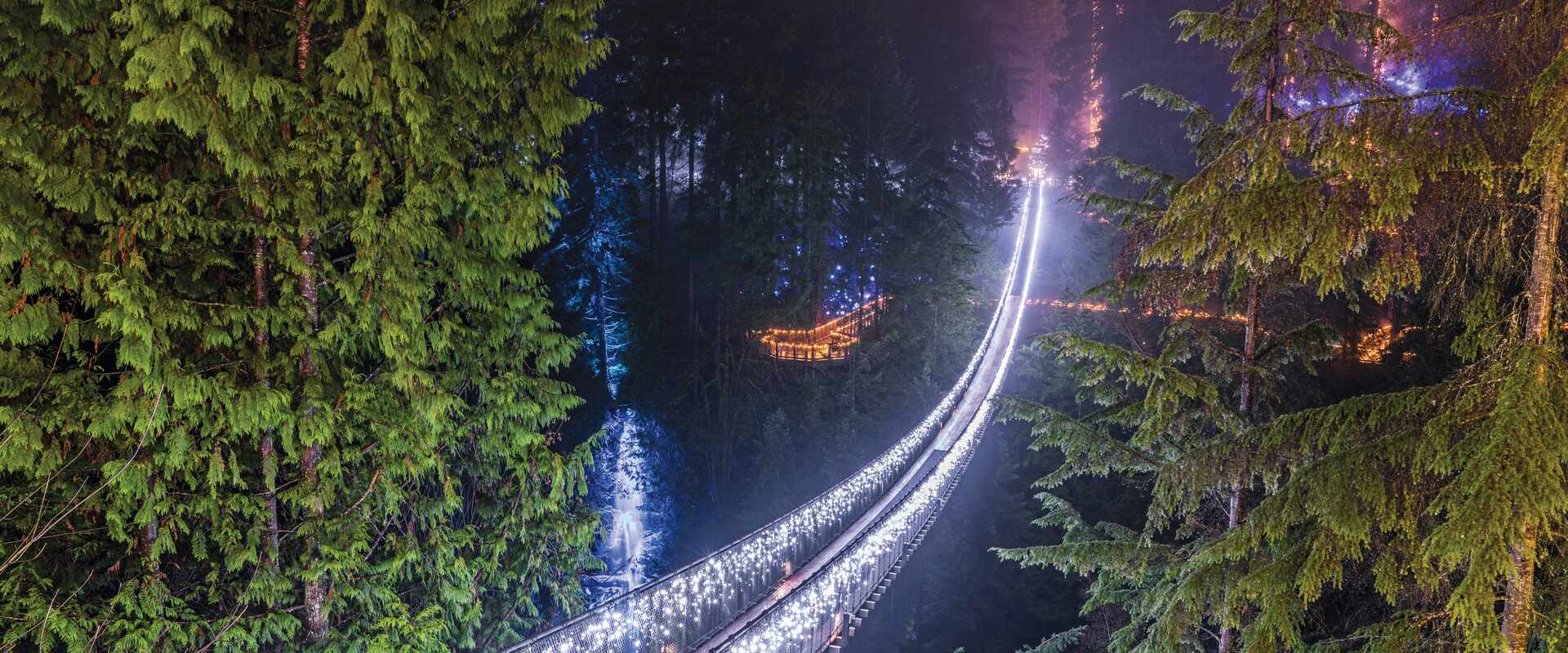Discover Vancouver's Capilano Suspension Bridge
Why Vancouver’s impressive Capilano Suspension Bridge and park remains one of Canada’s most favoured attractions. In this article, Shaney Hudson explores this iconic destination.
Ask any Vancouverite when the best time to visit Capilano Suspension Bridge Park is, and you’ll get a different answer. Some will suggest spring, when the Capilano River swells with meltwater, roaring down the canyon. Others will say summer, when the ponds fill with rainbow trout, or in autumn, when coloured leaves crunch underfoot. However, for many it’s winter that is the most enchanting time to visit. The fir trees are dusted with snow, the canyon fills with mist, and crossing the park’s 137-metre-long suspension bridge can almost feel like walking through the clouds.
History
Capilano Suspension Bridge Park offers a taste of the British Columbian wilderness and, for more than a century, has been one of Vancouver’s biggest attractions. The original suspension bridge was established in 1889 when a Scottish civil engineer named George Grant Mackay purchased 6,000 acres of forest by the Capilano River, built a slab hut, and constructed the bridge.Present Day
A hundred-plus years later, the Capilano Suspension Bridge Park is considered a Canadian icon. Rebuilt and reinforced with steel cables, the 70-metre-high suspension bridge is the heart of a sprawling outdoor complex that embeds visitors in the middle of the temperate West Coast Rainforest. The park itself is filled with towering Douglas firs, some of which are estimated to be more than 1,500 years old, as well as red cedar and western hemlock trees.The Treetops Adventure
The Treetops Adventure takes visitors up into the boughs of the Douglas firs through a series of seven suspension bridges criss-crossed through the forest, the highest of which is more than 30 metres from the ground. Using a unique collar system, the bridges are suspended on eight 27-tonne trees without the use of nuts and bolts, allowing the 250-year-old trees room to grow, unscathed, over the coming centuries.Wildlife and Heritage
British Columbia is home to many species of raptors and, during the warmer months, Capilano hosts a number of rehabilitated birds of prey including owls, osprey, falcon and eagles at the park as part of its education and conservation program. It’s one of a series of educational initiatives, which include hourly history and nature tours, as well as a story centre detailing the history of the bridge and an area dedicated to local First Nations people.Festivities
And while the park is considered a great destination any time of year, come December, it’s transformed into the world’s biggest living Christmas tree for the Canyon Lights celebration, which runs from mid-November until the end of January.During this time, bridges and fir trees around the canyon are adorned with thousands of twinkling lights –a good reason to see if winter really is the most beautiful time to visit Capilano. Discover the magic of Capilano Bridge on the Twelve Days of Christmas Tour.
Images courtesy of 2018 Daniel Avram/Shutterstock and Capilano Suspension Bridge Park






